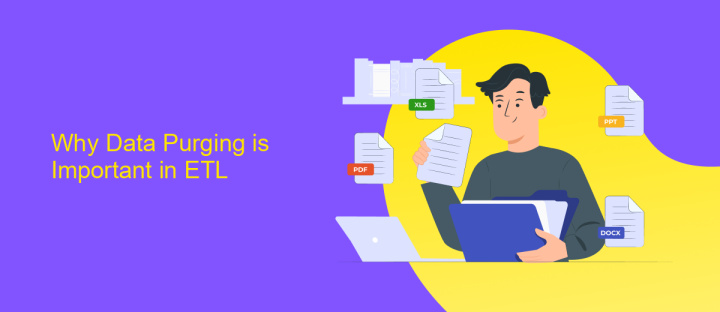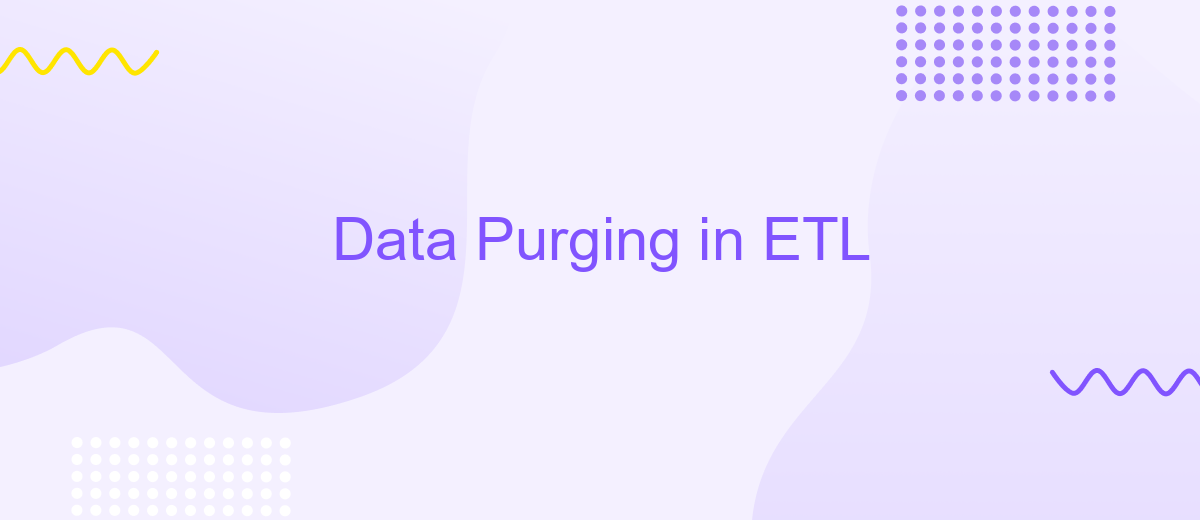Data Purging in ETL
Data purging in ETL (Extract, Transform, Load) processes is a crucial step to ensure the efficiency, accuracy, and security of data management systems. By systematically removing obsolete, redundant, or irrelevant data, organizations can optimize storage, enhance performance, and maintain data integrity. This article explores the importance, methodologies, and best practices for effective data purging in ETL workflows.
Introduction
Data purging in ETL (Extract, Transform, Load) processes is a critical activity that ensures the integrity and efficiency of data management systems. As organizations accumulate vast amounts of data, it becomes essential to periodically remove obsolete, redundant, or irrelevant information. This not only optimizes storage but also enhances the performance of data processing tasks.
- Improved system performance by reducing data volume.
- Enhanced data quality and accuracy.
- Reduced storage costs and resource usage.
- Compliance with data retention policies and regulations.
Implementing effective data purging strategies requires careful planning and the right tools. Services like ApiX-Drive can facilitate seamless integration and automation of data purging tasks within ETL workflows. By leveraging such tools, organizations can ensure that their data remains relevant, accurate, and compliant with industry standards. This ultimately leads to more efficient data management and better decision-making capabilities.
Why Data Purging is Important in ETL

Data purging is a critical process in ETL (Extract, Transform, Load) as it ensures the efficiency and reliability of data management systems. By removing outdated, redundant, or irrelevant data, data purging helps maintain the integrity and performance of databases. This not only optimizes storage space but also enhances the speed and accuracy of data retrieval, which is essential for making informed business decisions. Without regular data purging, organizations risk accumulating vast amounts of unnecessary data, leading to slower query performance and increased storage costs.
Furthermore, data purging is vital for compliance with data protection regulations, such as GDPR and CCPA, which mandate the regular deletion of personal data that is no longer needed. By implementing a robust data purging strategy, businesses can avoid legal penalties and protect sensitive information. Tools and services like ApiX-Drive can facilitate seamless integration and automation of data purging processes, ensuring that data is continuously cleaned and updated without manual intervention. This not only saves time but also reduces the risk of human error, making the data purging process more efficient and reliable.
Methods of Data Purging

Data purging in ETL (Extract, Transform, Load) processes is essential for maintaining data accuracy and performance. Various methods can be employed to ensure that obsolete or irrelevant data is effectively removed from the system.
- Time-based purging: This method involves deleting data that is older than a specified period. It is particularly useful for transactional data where historical records are no longer needed.
- Event-based purging: Data is purged based on specific events or conditions. For example, customer data may be deleted after a certain period of inactivity.
- Automated purging tools: Tools like ApiX-Drive can automate the data purging process. ApiX-Drive allows for seamless integration with various data sources, ensuring that data purging rules are consistently applied across the system.
- Manual purging: Involves manual intervention to identify and delete unnecessary data. This method is less efficient but can be useful for complex datasets where automated rules may not apply.
Implementing these methods helps in optimizing database performance, reducing storage costs, and ensuring data compliance. Choosing the right purging strategy depends on the specific requirements and nature of the data within the ETL process.
Challenges and Considerations in Data Purging

Data purging in ETL processes presents several challenges and considerations that need to be addressed to ensure data integrity and system performance. One of the primary challenges is identifying which data should be purged without affecting the accuracy and completeness of the remaining data.
Another consideration is the timing and frequency of data purging activities. Purging data too frequently can lead to unnecessary system load, while infrequent purging can result in storage bloat and reduced performance. Additionally, ensuring compliance with data retention policies and regulatory requirements is crucial.
- Data Identification: Determining which data is obsolete and can be safely purged.
- Performance Impact: Managing the system load during purging operations.
- Compliance: Adhering to legal and regulatory data retention requirements.
- Automation: Using tools like ApiX-Drive to automate and streamline the purging process.
Effective data purging requires a balance between maintaining data integrity and optimizing system performance. Leveraging automated tools such as ApiX-Drive can help streamline the process, ensuring that data purging is conducted efficiently and in compliance with relevant regulations.
- Automate the work of an online store or landing
- Empower through integration
- Don't spend money on programmers and integrators
- Save time by automating routine tasks
Best Practices for Data Purging
Implementing a robust data purging strategy is essential for maintaining the efficiency and performance of your ETL processes. Begin by defining clear retention policies that specify how long data should be retained before being purged. Regularly review and update these policies to ensure they align with current business requirements and compliance regulations. Additionally, automate the purging process to minimize manual intervention and reduce the risk of human error. Tools like ApiX-Drive can help streamline the integration and automation of data purging tasks, ensuring that your ETL pipelines remain efficient and reliable.
Another best practice is to conduct thorough testing before implementing any data purging procedures. This includes creating backups of critical data and running purging scripts in a controlled environment to identify potential issues. Monitoring and logging are also crucial; maintain detailed logs of purged data to facilitate audits and troubleshoot any problems that may arise. Finally, educate your team about the importance of data purging and provide ongoing training to ensure everyone understands the processes and policies in place. By following these best practices, you can effectively manage your data lifecycle and optimize your ETL operations.
FAQ
What is data purging in ETL?
Why is data purging important in ETL processes?
How often should data purging be performed?
What are the best practices for data purging in ETL?
Can data purging be automated in ETL processes?
Time is the most valuable resource in today's business realities. By eliminating the routine from work processes, you will get more opportunities to implement the most daring plans and ideas. Choose – you can continue to waste time, money and nerves on inefficient solutions, or you can use ApiX-Drive, automating work processes and achieving results with minimal investment of money, effort and human resources.


